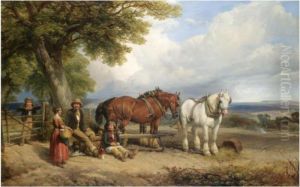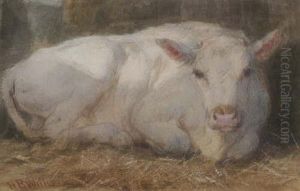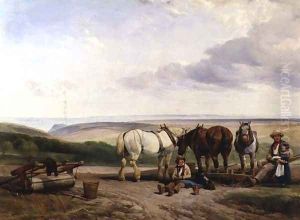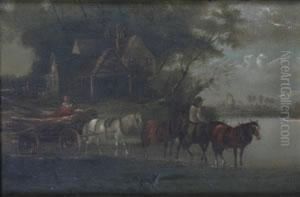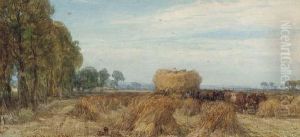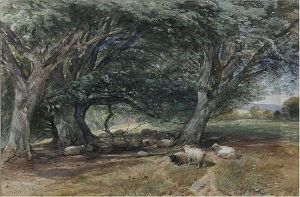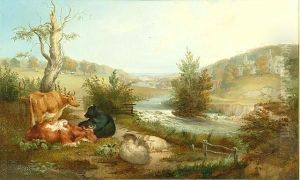Henry Brittan Willis, R.W.S. Paintings
Henry Brittan Willis, born in 1841, emerged as a notable English watercolour painter, recognized for his contributions to the Victorian era's artistic landscape. His affiliation with the Royal Watercolour Society, denoted by the post-nominal letters 'R.W.S.', underscores his significance and esteem within the British art world of the time. Willis's artistry was primarily focused on landscape and architectural subjects, capturing the quintessence of rural England and European scenes with a delicate and precise touch that was characteristic of watercolour techniques of his period.
Willis's journey into the art world was marked by his dedication to mastering the nuances of watercolour, a medium known for its demand for control and spontaneous expression. His works, often celebrated for their atmospheric quality and attention to detail, reflect a deep engagement with the natural and built environment. He participated in exhibitions and was an active member of the Royal Watercolour Society, an institution that played a pivotal role in promoting watercolour as a serious and respected artistic medium during the 19th century.
Throughout his career, Willis contributed to the Victorian art scene not just through his artworks but also through his involvement in the artistic community, helping to elevate the status of watercolour painting. His death in 1923 marked the end of a career that had spanned several decades, during which he had witnessed and participated in the evolution of British art, leaving behind a legacy that would continue to inspire watercolour artists and enthusiasts.















